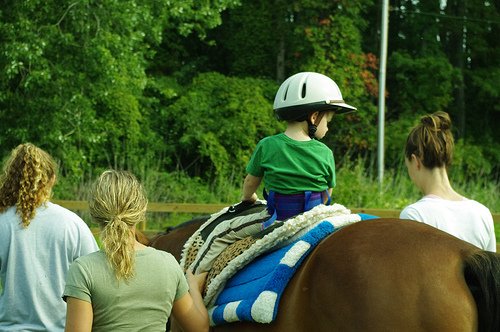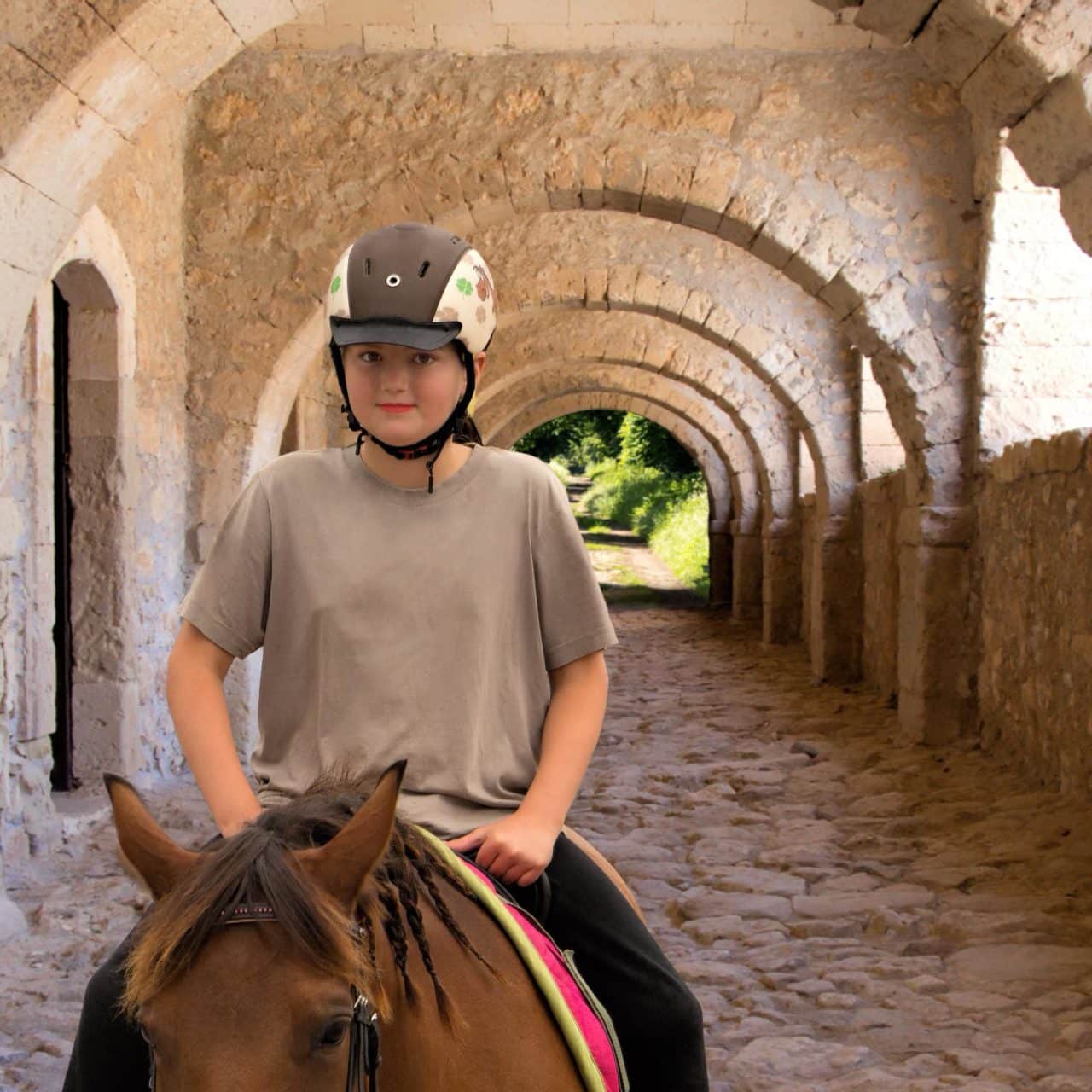
Animals are widely considered to be therapeutic for humans, but none so much as the horse.
Physical Therapy
There are many therapeutic riding programs throughout the world. The technical term is “hippotherapy.” According to the American Hippo Therapy Association (AHA), hippotherapy has been used in the US since the 1970’s and internationally for 30 years by physical therapists, occupational therapists and speech-language pathologists.
A horse’s walk simulates the movement of walking for the rider. As the rider allows their hips to move with the motion of the horse’s walk, the rider’s body moves in much the same way as if the rider were walking under their own power. For those with difficulty walking under their own power, riding a horse helps exercise the muscles that might otherwise go unused. What sets hippotherapy apart from other forms of treatment such as therapy balls and scooters is the variability in a horse’s movement. A therapist can lengthen and shorten a horse’s stride, speed him up or slow him down. It is impossible to get the much variability with an object.
With my own spinal injury, getting back in the saddle is what helped me recover so quickly. The doctors were amazed at how quickly I recovered. The therapeutic benefits of riding helped me manage the pain and simulate walking without putting too much strain on the muscles. It has also helped me build up core muscle around the injury which helps stabilize the spine and helps with the pain.
Hippotherapy for Autism
According to the Autism Spectrum Disorder Foundation (ASDF), hippotherapy is catching on as a therapy tool for helping children with autism. It is used to help improve fine motor skills, balance, and strength. It also promotes language and social skills by allowing the children to form an emotional bond with the horses they ride. Having the opportunity to bond with these animals encourages children to perform skill-building tasks. Horses have proved remarkably efficient at bonding with and empathizing with children who have a hard time connecting to other humans.
Autistic children are often better at physical communication than verbal. This meshes well with a horse’s natural method of communication. Horses are not naturally very vocal themselves. Being prey animals that developed out on the open range, they developed excellent eyesight and were able to see each other. This lead to a nonverbal system of communication to avoid attracting attention of predators nearby. Nonverbal autistic children often relate very well to this form of communication.
Hippotherapy for PTSD
According to the U.S. Department of Veteran Affairs, hippotherapy is an important tool in helping veterans recover from PTSD and related traumas. Caring for a horse forces the veterans to focus on something other than themselves. It allows them to stop thinking about the past and make new, better, memories to replace the traumatic memories that haunt them. Riding a horse takes focus and concentration. There is no time to worry about anything else but the horse. It allows the veterans to step away from the world for a while and find some peace to help them regain their sense of self.
Hippotherapy is not just for treating PTSD in veterans though. Sexual assault survivors and really anyone with similar traumas can and do benefit from similar hippotherapy treatments. Horses are wonderfully versatile animals that are very non-judgmental. They don’t ask too many questions and they don’t judge. They accept each person for who they are.
[bctt tweet=”Animals are widely considered to be therapeutic for humans, but none so much as the horse.” username=”EW_Blog” prompt=”share with a friend”]
Photo by Talisman Therapeutic Riding







